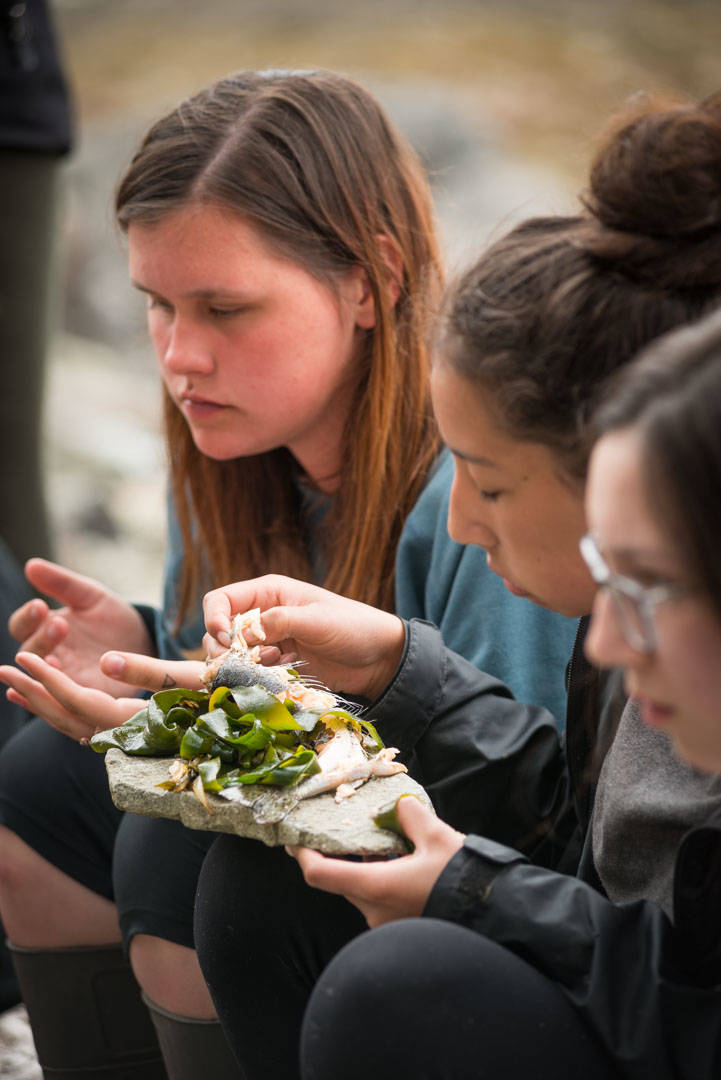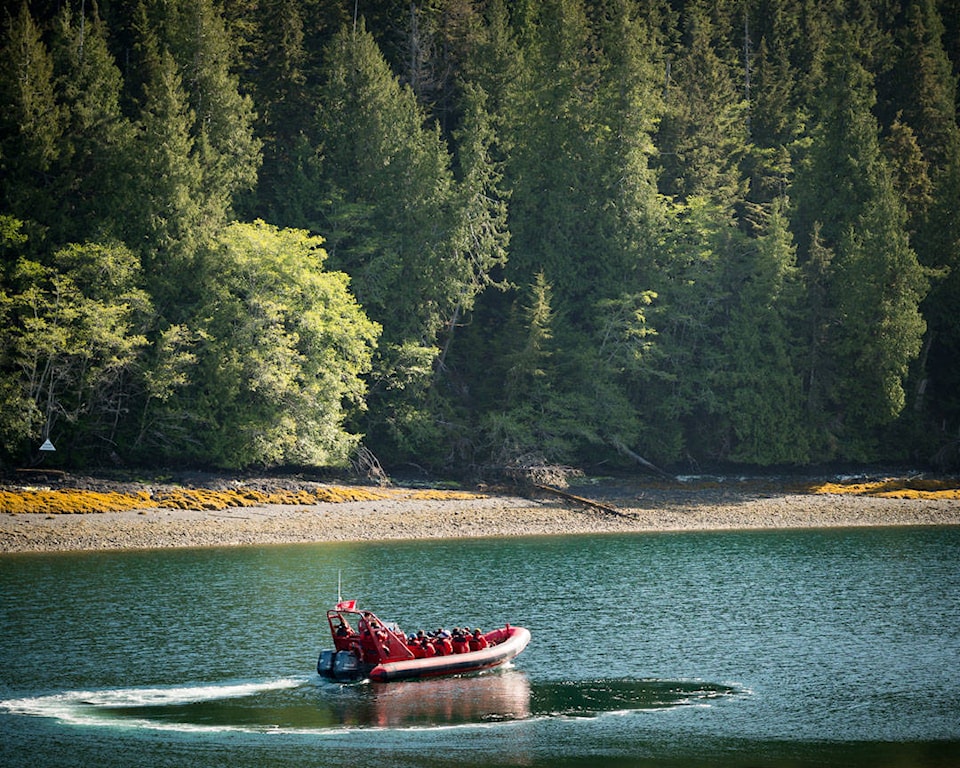On an island near Windy Bay/Hlk’yah G̱aawG̱a, Grade 9 students from GidG̱alang Ḵuuyas Naay studied intertidal life, then built a fire on the beach.
Cooks Kiku Dhanwant and Edda Koenig had brought freshly caught trout from Mount Moresby Adventure Camp, and they cooked it right there on the beach, serving it on flat rocks with a variety of seaweeds on the side.
“It was just magical,” says Toby Sanmiya, one of the camp leaders who led this year’s Grade 9 Gwaii Haanas trip.
Since 2015, Gwaii Haanas, the Haida Gwaii School District and Mount Moresby Adventure Camp have all supported a three-day trip where students boat down from Moresby Camp to the Tanu village site, then go on to the giant spruce, low-tide wonders, culturally modified trees, and Legacy Pole during a two-night stay at Windy Bay.
Sanmiya said this year was a standout, for two reasons: MMAC hosted one of its biggest Grade 9 groups ever, with 28 youth, and it was the first time they all ate a fire-cooked meal together of freshly caught and gathered food.
“That’s really important for the students to have knowledge of,” he said, adding that they hope to do it again for the Grade 9s next year.
“It’s part of culture and local food, being nourished by the place that you’re in.”
| Grade 9 students from GidG̱alang Ḵuuyas Naay and leaders with Mount Moresby Adventure Camp gather around the big spruce by Windy Bay/Hlk'yah G̱aawG̱a. (Jason Shafto/Full Moon Photo) |
Leslee Mackey is executive director of MMAC, a non-profit outdoor learning camp by Mosquito Lake that teaches forest stewardship and outdoors skills.
Mackey said that after four years, new Grade 9 students start the school year knowing they will get a chance to visit Gwaii Haanas at the end of their spring camp at MMAC.
“It really feels like a thing now,” she said.
Some of the comments this year’s students made were that all students deserve to see Gwaii Haanas at least once.
“It’s great to see where the Haida were before contact,” said one student.
“It’s unfair to grow up here without seeing Haida Gwaii’s best spot,” said another, who was sure that spot is Windy Bay.
Giving all Haida Gwaii high school students an opportunity to visit is one of the goals in Gwaii Haanas’ draft Land-Sea-People plan, which sets out management goals for Gwaii Haanas over the next decade.
Moving dozens of students from Moresby Camp to Tanu to Windy Bay isn’t easy — this year’s Gudangaay Tlaats’gaa Naay trip had to be cancelled due to rough weather — and it’s also expensive, with typical transportation costs of well over $10,000.
But it’s a worthwhile goal, said Sanmiya, noting that most Grade 9s on the trips had never been to Gwaii Haanas before, despite growing up on island.
Last year at Windy Bay, the students gathered in the Looking Around and Blinking House to hear stories from the U.S. team of ex-Navy SEALS who took part in a massive project to eradicate the invasive deer from Ramsay and four nearby islands. They explained the project in detail, and spoke about why it was so difficult — for one thing, unlike the white-tailed deer they had mainly dealt with before, the Sitka black-tailed deer on Haida Gwaii don’t snort when they scent people.
“Our deer don’t do that — they just quietly walk off, and then they come in behind you, working their way around and sorting of investigating what’s going on,” Sanmiya said. The shooters called them “ghost deer.”
In previous years, Grade 9 students visiting Windy Bay have also met scuba divers studying runaway “urchin barrens,” or set up microscopes to study lichens from the surrounding old-growth forest.
Sanmiya said the trees around MMAC and Mosquito Lake are beautiful, but as second-growth, it’s altogether different, and the comparing the two serves students well.
“You go down to Gwaii Haanas in this old-growth at Windy Bay and all of a sudden you grasp this something bigger going on,” he said. “You feel the age of the place.”
“I think that sticks with us.”

